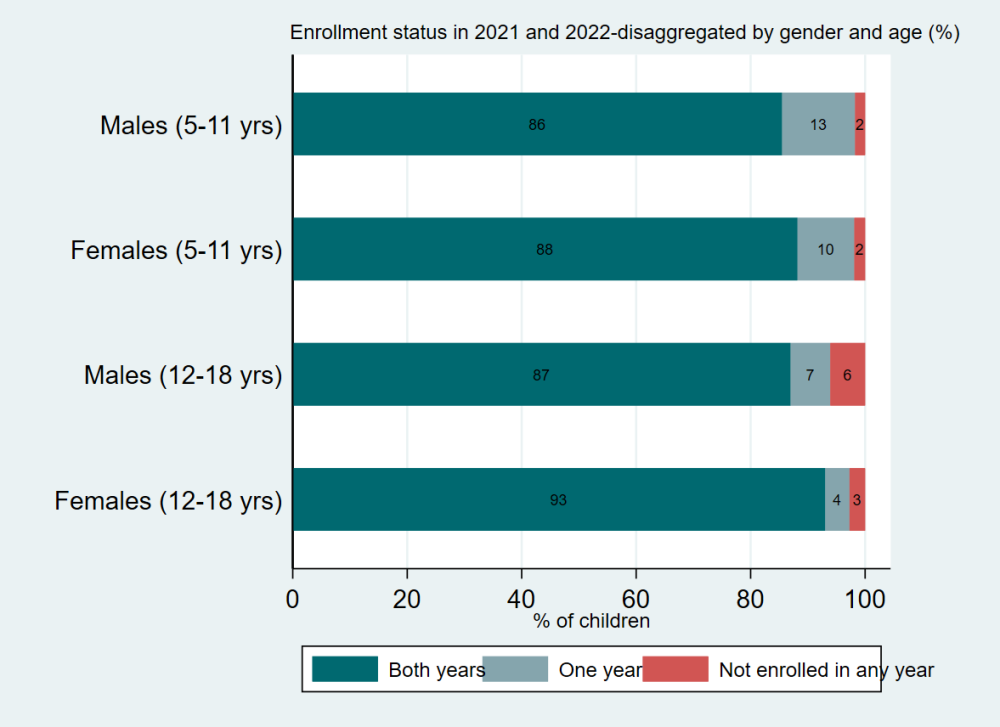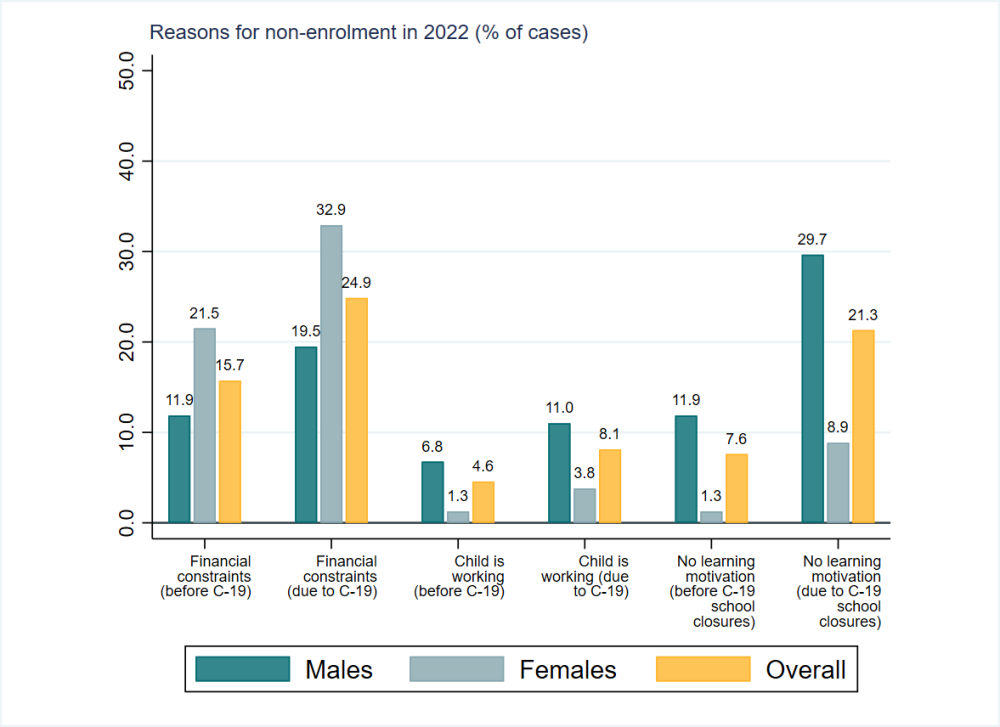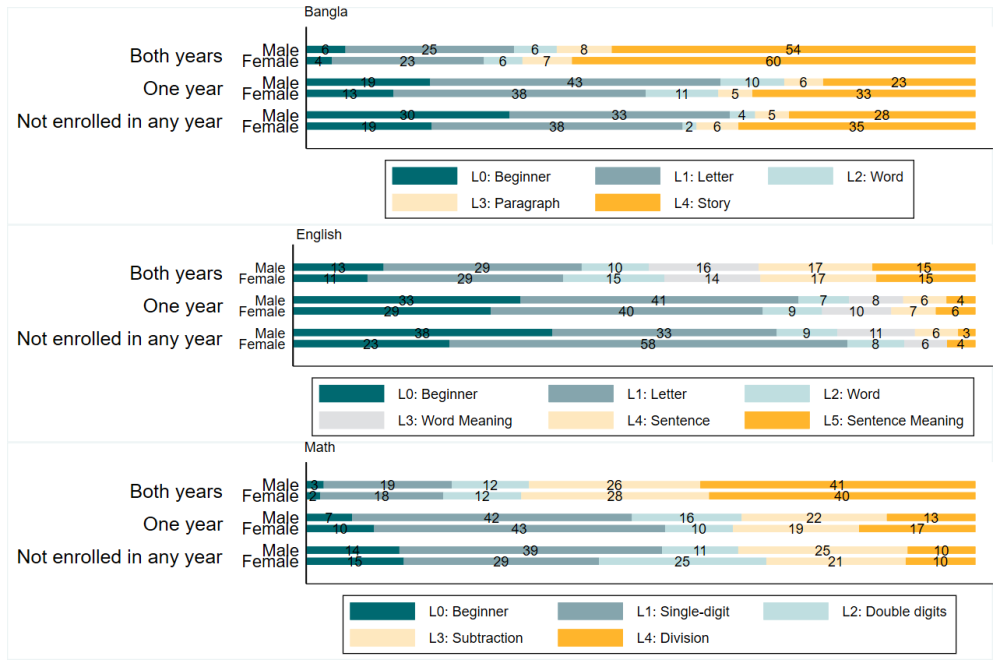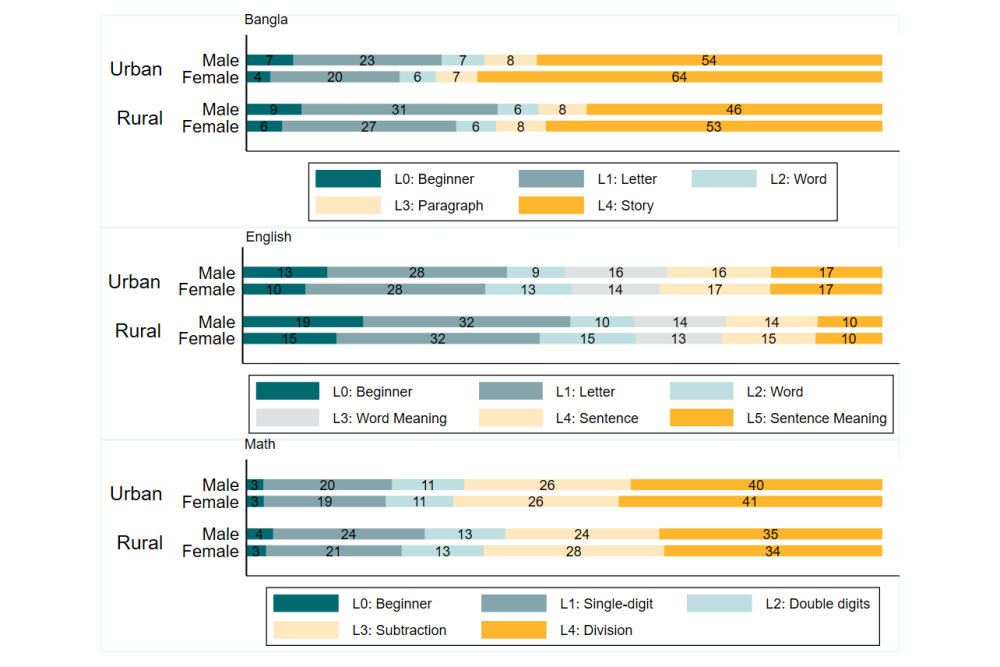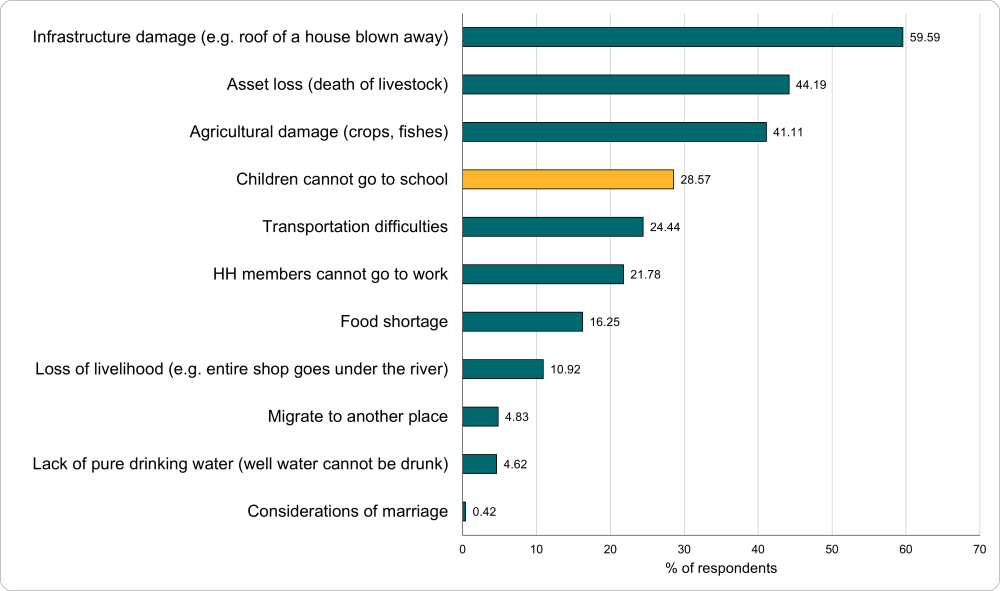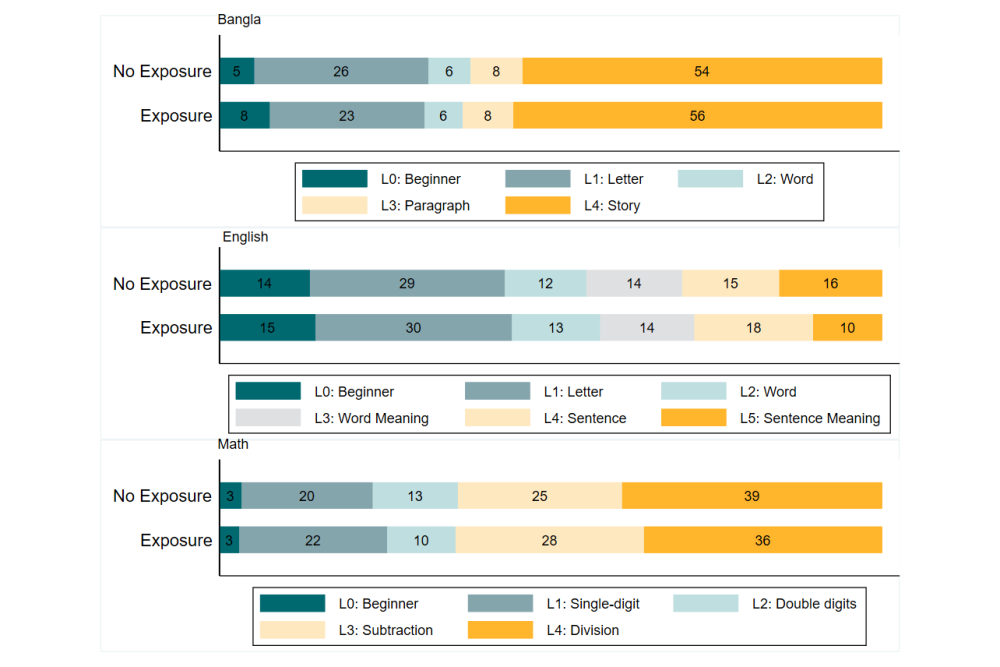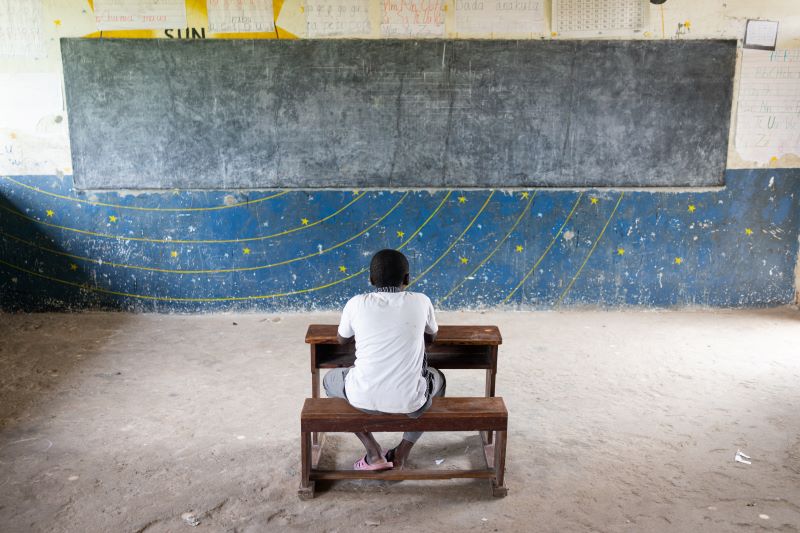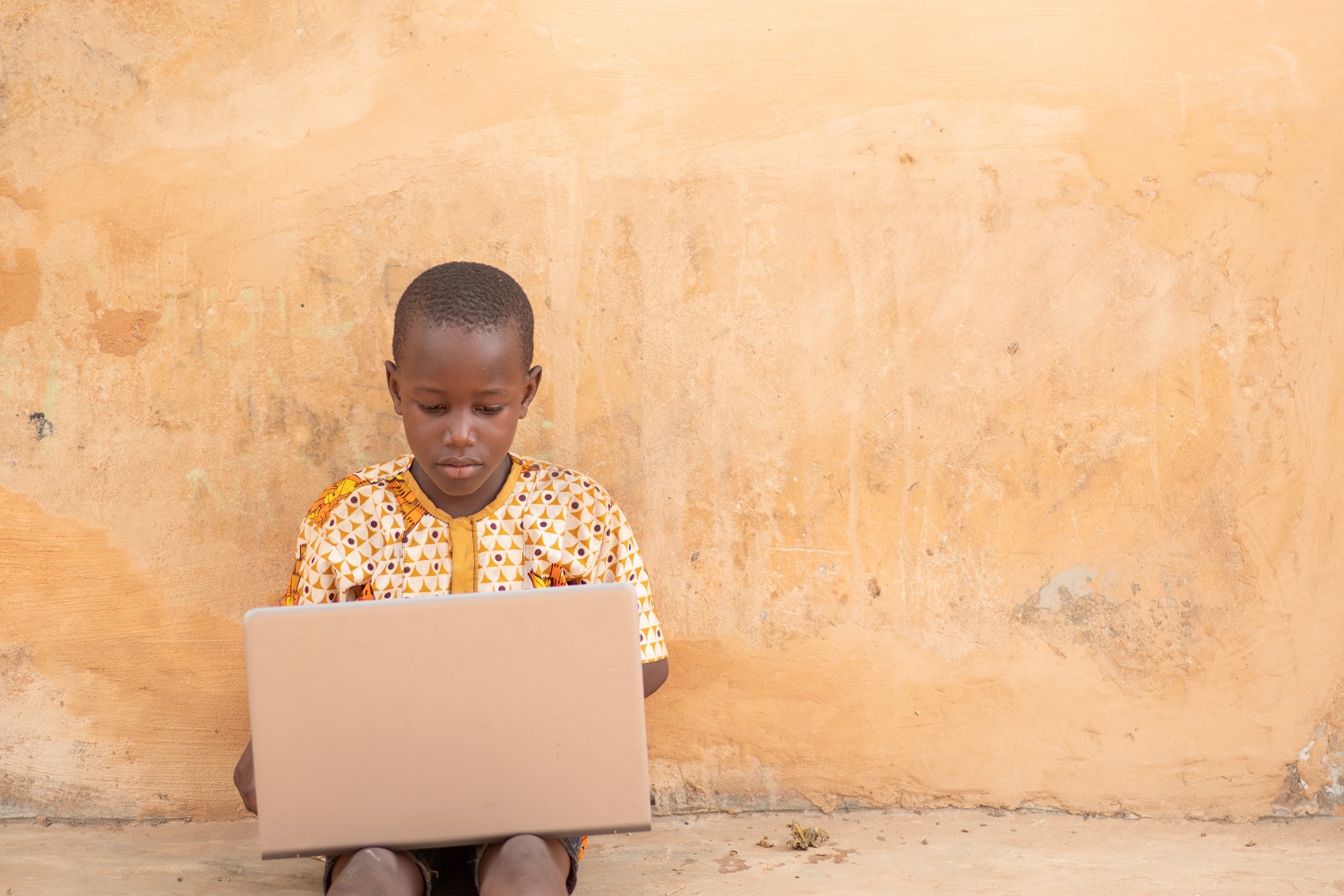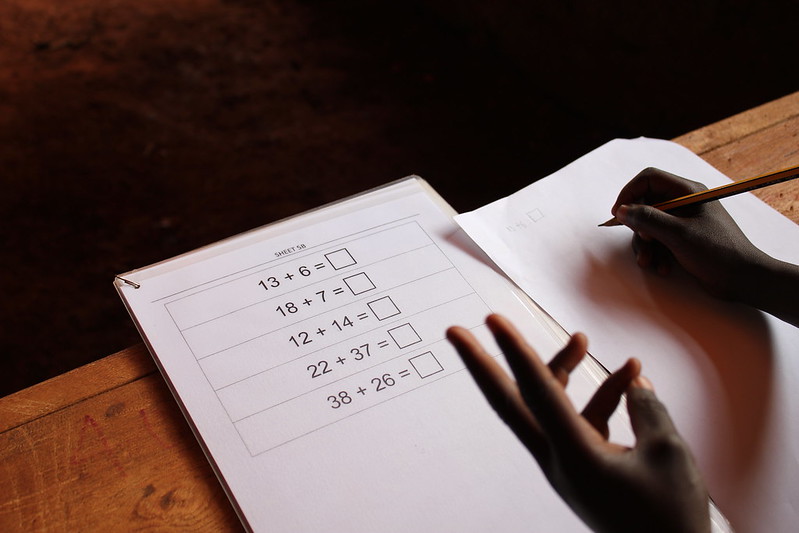Recommended
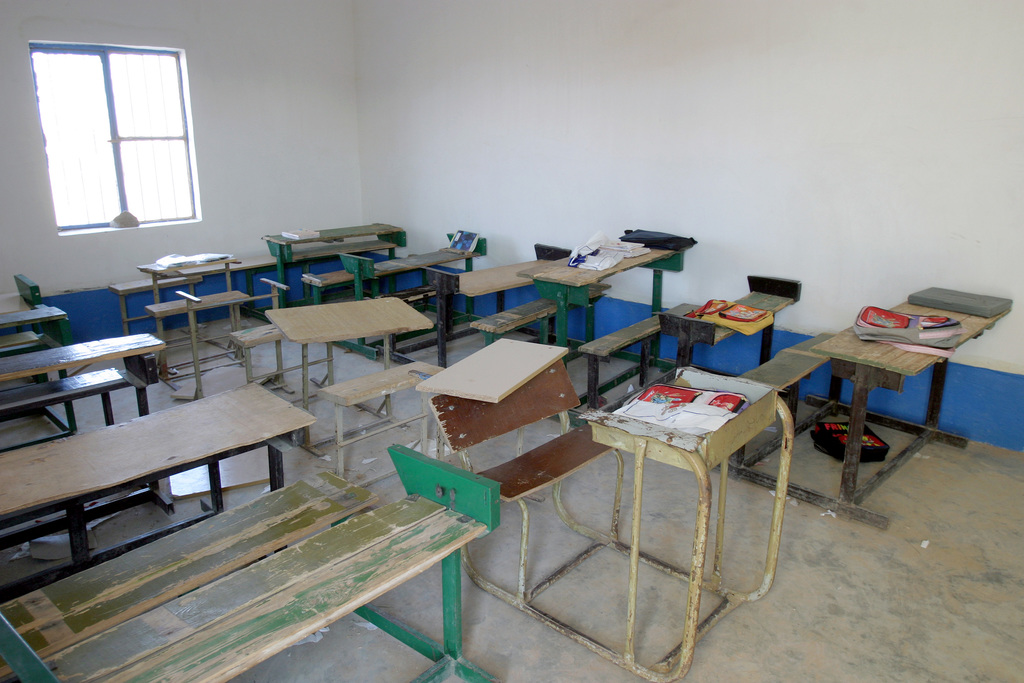
Blog Post
Even prior to the pandemic, the educational achievements of Bangladeshi children were below desired levels. The prolonged disengagement from learning during the pandemic raised concerns about learning gaps or even learning loss. But there are limited data on children’s learning status (foundational and grade-level) or access to education for both pre- and post-pandemic periods. Data on children’s learning outcomes for the period of school closures are even scarcer.
In order to address this, in a two-phase study, we collect data on foundational learning outcomes for students in Bangladesh from a nationally representative sample of 3,000 households (4,103 children) from 61 districts (excluding the Chittagong Hill Tracts (CHT) districts of Bandarban, Rangamati, and Khagracchari) across eight divisions. We also examine the relationship between shocks and the access to education and learning levels of students. Findings from the first round of household surveys are outlined in this blog.
Lower motivation to study and worsening household finances resulting from COVID-19 are major self-reported reasons of keeping boys and girls from school
In 2022, nearly all (95 percent) of the children in our sample were enrolled in an educational institution, with relatively higher enrollment rates among younger (5-11 years) than older (12-18 years) children (Figure 1 below). Using data on reported enrollments for 2021 and 2022 we find that a larger proportion of girls than boys reported enrollment in both years. This trend holds true for both young and especially adolescent males, a comparatively higher proportion of whom were not enrolled in either year.
Figure 1: Enrollment status of children (2021-2022) disaggregated by gender and age (%)
Note: Overall N: 4002; Male Children: 1956; Female Children: 2046; Enrolment status of 2021 is collected from the Back to School (B2S) survey.
The documented effects of COVID-19 on households during the lockdowns revealed reduced food consumption, depleted savings, and increased borrowing to meet basic needs, leading many families into debt. Our survey findings suggest that households are still struggling to recover financially, which the households report as a primary reason for children's restricted educational access. Among those who did not remain enrolled in 2022, the primary reasons cited were the inability of households to sustain educational expenses (26 percent) and a self-reported lack of motivation due to extended school closures (21.5 percent) (see Figure 2). Financial constraints were already a significant factor before COVID-19, but the pandemic has worsened households’ economic status. Before the pandemic, about one in every eight boys did not enrol to school due to financial constraints, which jumped to one in every five boys. The situation worsened for girls. Financial constraint as a primary reason for non-enrollment of girls increased from one in five to one in three. On the other hand, a 3.5 times higher proportion of boys reported losing motivation to study due to prolonged school closures, aligning with evidence gathered in 2020 and 2021.
Figure 2: Major reasons reported for children not being enrolled in an education institution in 2022
Note: N of valid cases: 197. This question allowed for multiple responses; hence, percentages will not aggregate to 100.
Continuous enrollment (reported for both 2021 and 2022) appears to be associated with improved literacy (both Bangla and English) and numeracy skills (Figure 3). We administered the Bangladeshi-adapted Annual Status of Education Report (ASER) over the phone to examine the current state of foundational literacy and numeracy among 5-18 year old children in Bangladesh. Nearly three times as many students with two years of post-COVID continuous schooling (i.e. reportedly enrolled in both 2021 and 2022) demonstrate higher proficiency levels in both Bangla and English compared to those with only one year of schooling (reportedly enrolled in either 2021 or 2022, but not both years). Children not enrolled in either 2021 or 2022 appear to have retained some degree of foundational skills in all three subjects, with more children able to read a Bangla short story (more girls than boys) than comprehend English sentences and solve division problems. Interesting to note is that especially boys, but also girls, not enrolled in any year were more likely to be at reading proficiency than those than had enrolled in school for only one year.
Figure 3: Maximum proficiency levels in Bangla, English and Mathematics disaggregated by their gender and enrollment period
Note: Maximum proficiency graphs depict the proportion of children at their highest level of foundational competency for a particular subject module.
Urban students outperform their rural peers, but the impact of COVID-19 is difficult to see
A previous national evaluation, assessing students’ performance in Bangla and Mathematics in Grades 3 and 5, found that rural students performed better in Mathematics while urban students performed better in Bangla. Findings from a scoping review suggested that the COVID-19 pandemic may create or worsen an urban and rural divide, given the varying degrees of learning support and engagement provided during school closures. Once classes resumed, it was expected that urban students would outperform their rural counterparts.
As we might expect, our findings show that urban students perform consistently better than rural students after the pandemic. Figure 4 indicates that a greater proportion of urban than rural children overall can grasp basic English sentences and correctly solve division problems. Girls tend to do slightly better than boys across all subjects, but especially in Bangla, maintaining the urban-rural divide.
These differences by themselves are not meaningful. Despite indications of the pandemic's effect on creating or widening regional learning disparities, we cannot draw any conclusions without comparable pre-pandemic data for our study. Although the pandemic's impact on exacerbating this divide is yet to be conclusively determined, it underscores the importance of equitable access to quality education and targeted interventions to narrow the learning gap between urban and rural areas.
Figure 4: Maximum proficiency levels in Bangla, English and Mathematics, disaggregated by region and gender
Note: Total number of children = 4002. Urban = 1883; Rural = 2119. Urban Male = 934; Urban Female = 949; Rural Male = 1022; Rural Female = 1097
Major catastrophes are associated with diminished educational outcomes and prospects for children
Bangladesh is one of the most disaster-prone countries in the world, and still experiences several cyclonic storms each year, and while the death toll from disasters has reduced drastically, it still causes major disruption to the lives of especially the most vulnerable households. More than one-third of the children in our sample reportedly experienced a natural disasters in the past year. Households who reported being exposed to such disasters suffered primarily from infrastructure damage and loss of livelihood, agricultural assets, and non-agricultural assets (Figure 5). We observed that 29 percent of these households were unable to send their children to school during/after a major disaster.
This may, however, be an underestimate. Being unable to send children to school is one aspect of how shocks are related with adverse educational outcomes as the consequences of such shocks on a household's means of subsistence and shelter are most likely to be associated with long-term negative effects on children's schooling, educational prospects, and human capital accumulation.
Figure 5: Reported consequences of natural disasters
Note: Total number of HHs that responded = 1460.
Children brought up in areas where natural disasters have occurred in the past year appear to have learning gaps compared to their peers who had not experienced any such catastrophe (Figure 6). A greater proportion of children living in unaffected areas can solve simple division problems and read and comprehend introductory English sentences than their afflicted counterparts. This suggests that the consequences of such shocks on a family are associated not only with children's reduced education prospects (as shown in Figure 5), but also with their foundational learning outcomes.
Figure 6: Maximum proficiency levels in Bangla, English and Mathematics disaggregated by their exposure to natural disasters
Note: Total number of children = 2875. N of children with no exposure = 1876; N of children with exposure= 999.
Lack of comparable data makes it hard to ascertain true impacts of COVID and other shocks on education, but the policy imperative is clear
Slow recovery from the pandemic for poorer households has increased barriers to education access, with more boys than girls dropping out of school and rural students continuing to be outperformed by their urban peers. But the limited availability of data on children's learning status and access to education for both pre- and post-pandemic periods underscores the need for robust monitoring and evaluation systems to capture the true extent of the challenges and the impacts of similar shocks. Especially considering Bangladesh’s propensity for experiencing regular climate related disasters, and our study’s findings of the impacts of exposure on learning levels for students, there is a need for enhanced support measures that increase the resilience of education provision and address the specific barriers to education for students in climate-related disaster-affected areas.
Disclaimer
CGD blog posts reflect the views of the authors, drawing on prior research and experience in their areas of expertise. CGD is a nonpartisan, independent organization and does not take institutional positions.
Image credit for social media/web: Lingkon Serao/Adobe Stock


